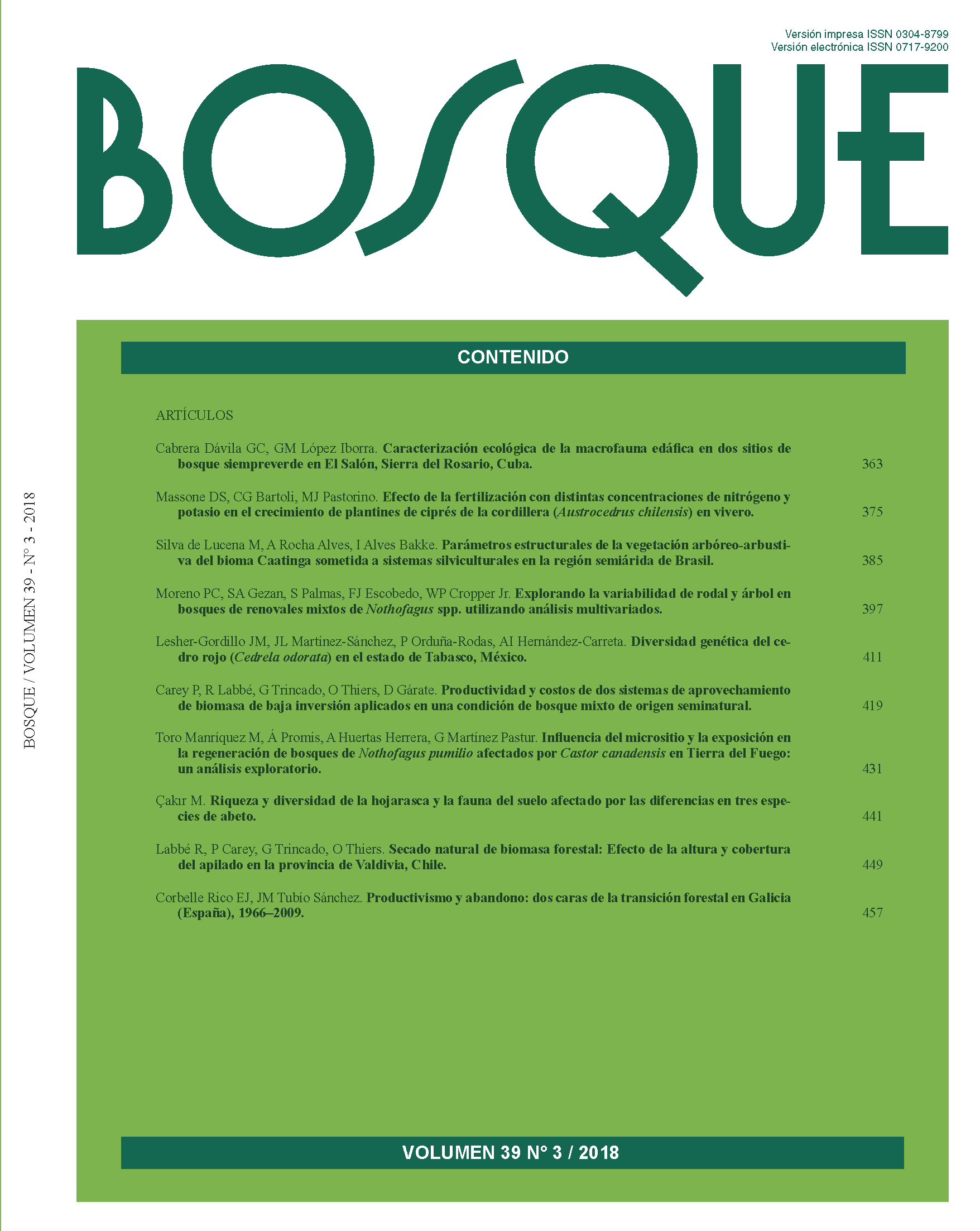Structural parameters of the arboreal-shrub vegetation of the Caatinga biome submitted to silvicultural systems in the Brazilian semi-arid region
Main Article Content
Abstract
This work aimed at evaluating the horizontal, diametric and volumetric structures and the diversity of arboreal-shrub vegetation in two areas of the Caatinga biome after 27 years of application of silvicultural systems. The first area is in the Seridó Ecological Station and the second is in Pedro Cândido Farm, in the county of Serra Negra do Norte-RN, Brazil. The silvicultural systems used were: general cut of all individuals of arboreal-shrub species; selective cut of arboreal-shrub species with base circumference > 8 cm; general cut of all individuals of arboreal-shrub species and subsequent burning of crop residues; general cut of all individuals of arboreal-shrub species with subsequent burning of crop residues and removal of stem from soil. In each area, 16 subplots of 400 m2 were delimited and individuals with circumference at breast height (CBH) > 6 cm were measured. The basal area provided by silvicultural systems was evaluated and compared with the results recorded before the experiment. Stem density, volumetric yield and diversity data were compared by the Tukey test. The selective cut provided the highest values of absolute dominance and volumetric production and favored the development of a more balanced diametric structure. The different forms of use of the areas influenced density and absolute dominance, and volumetric production.

